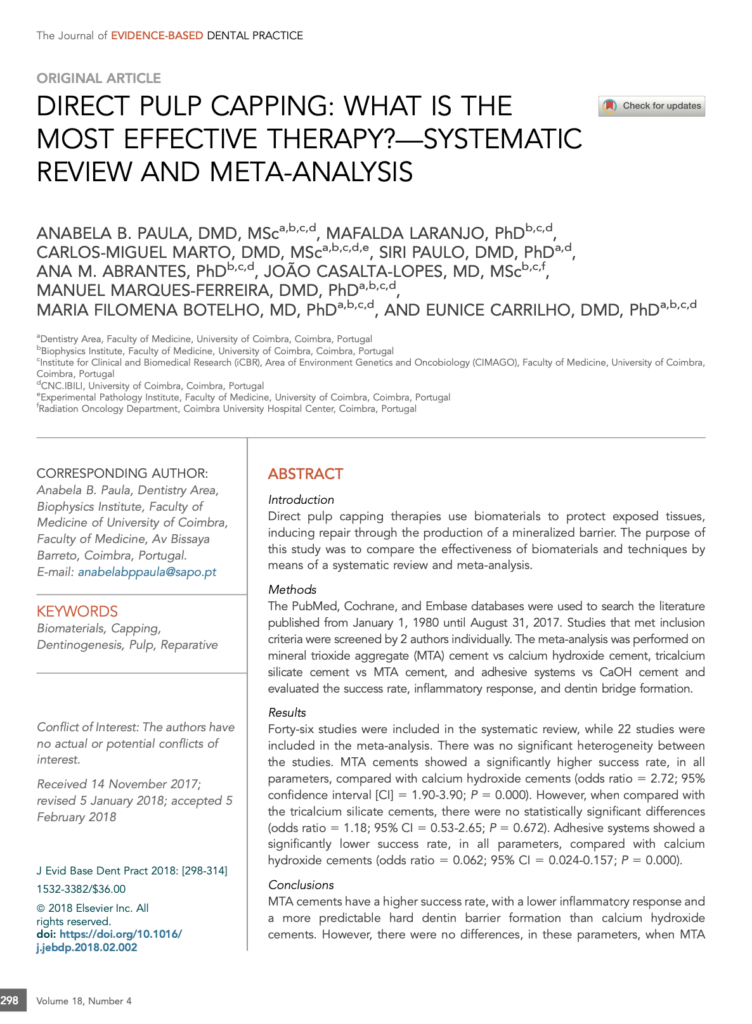
This Systemic Review and meta-analysis of different direct pulp capping materials focus on comparing what direct pulp cap material is best. This write-up will focus on the data comparing MTA vs. CaOH, Other brand calcium silicates vs. MTA, and Adhesive Systems vs. CaOH.
The authors found 46 articles to include in this systematic review, and 22 papers qualified for the meta-analysis. For those who need a refresher, a systematic review is when a researcher does a massive search looking for evidence that helps answer a question and then summarizes their findings in a review. A meta-analysis is when they summarize the results from these studies with statistical methods.
The authors compared three outcomes for each material: success rate, inflammatory response, and dentin bridge formation.
MTA vs. CaOH:
The authors found 19 studies comparing MTA vs. CaOH. Of these 19, 10 studies qualified for statistical meta-analysis, and the qualifications for meta-analysis were randomized control trials or retrospective cohort studies. They found a statistically significant difference where MTA showed an improved inflammatory response, dentin bridge formation, and success rate as a direct pulp cap material compared to CaOH.
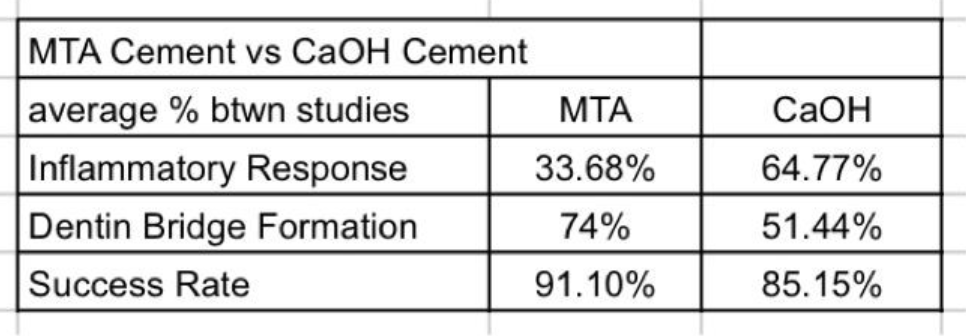
Other Brand Calcium Silicate vs. MTA
The authors found five papers reviewing other brands of calcium silicates compared to MTA. All five articles were randomized controlled trials and qualified for statistical meta-analysis. The results showed that the calcium silicates’ inflammatory response and success rate percentages were better. However, they did not find a statistical difference between these values.
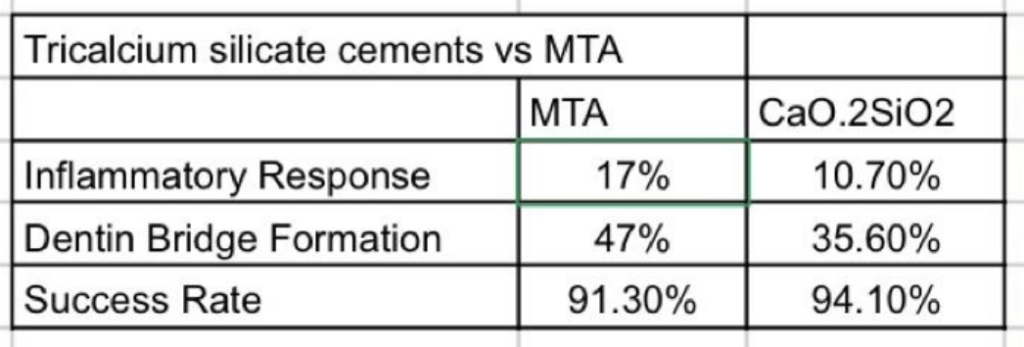
Adhesives vs. CaOH Cements
The authors found ten studies evaluating adhesives and CaOH as direct pulp cap material. Seven of the studies were randomized controlled trials and qualified for meta-analysis. They found from the seven studies that CaOH statistically improved percentages in all three outcomes.
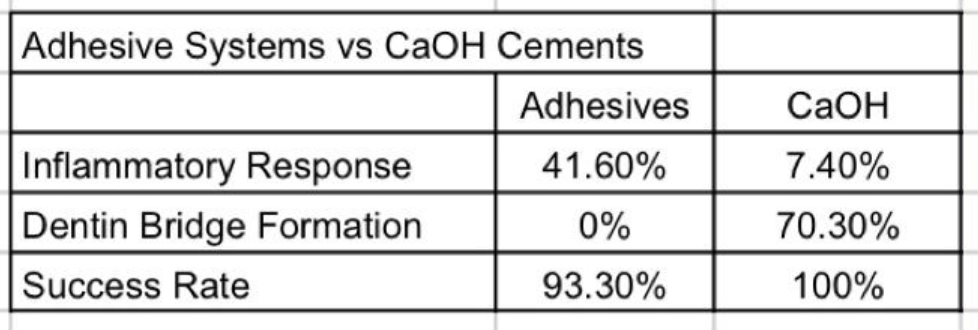
The study concluded with the authors recommending MTA as the best direct pulp cap material. While tricalcium silicate cements are recommended based on this evaluation, more studies are necessary to evaluate these materials. The authors also suggested not using adhesives as direct pulp capping material.
When I first read this paper a year ago, I was confused because we learned in our biomimetic training that liners are unnecessary when we have pulp exposures. Only a good bond with proper protocols is needed. So I looked deeper and read through the studies included in this paper’s Adhesives vs. CaOH analysis.
Here is a summary of what I found.
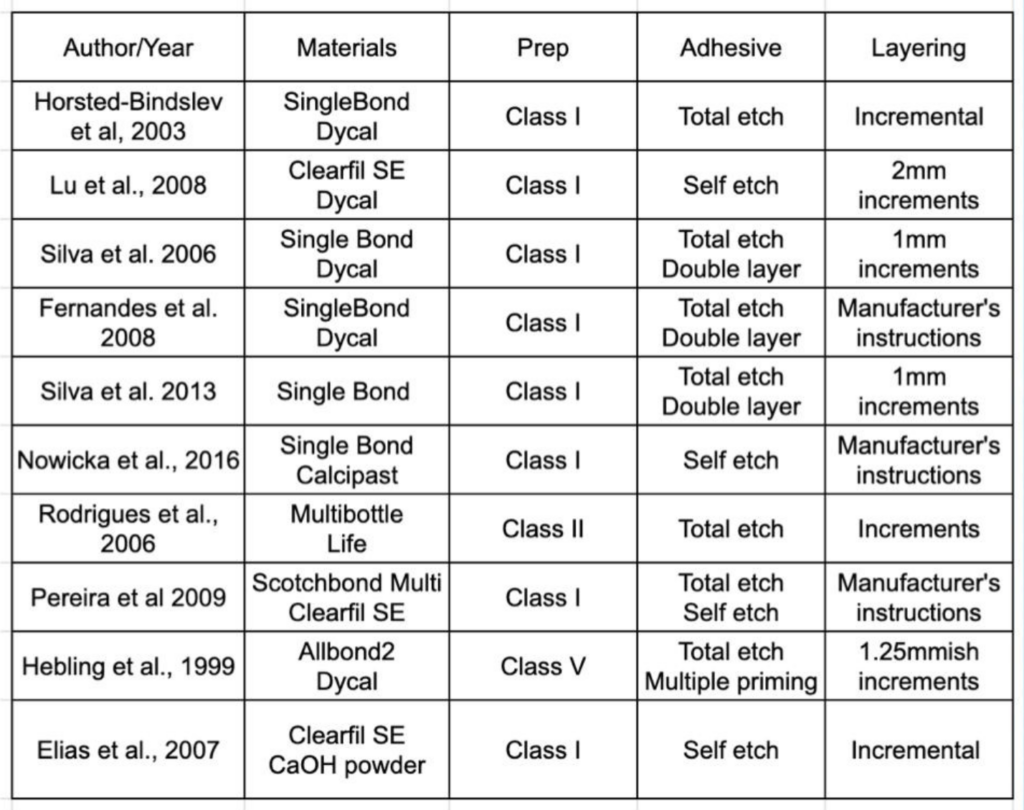
Most studies were completed with a universal/single bottle adhesive with the total-etch technique in a high c-factor preparation. The total-etch process means the acid would create greater transudation of pulpal fluid. With greater fluid and a high c-factor prep, the single bottle adhesive will have difficulty making a good hybrid layer on the dentin surrounding the exposure.
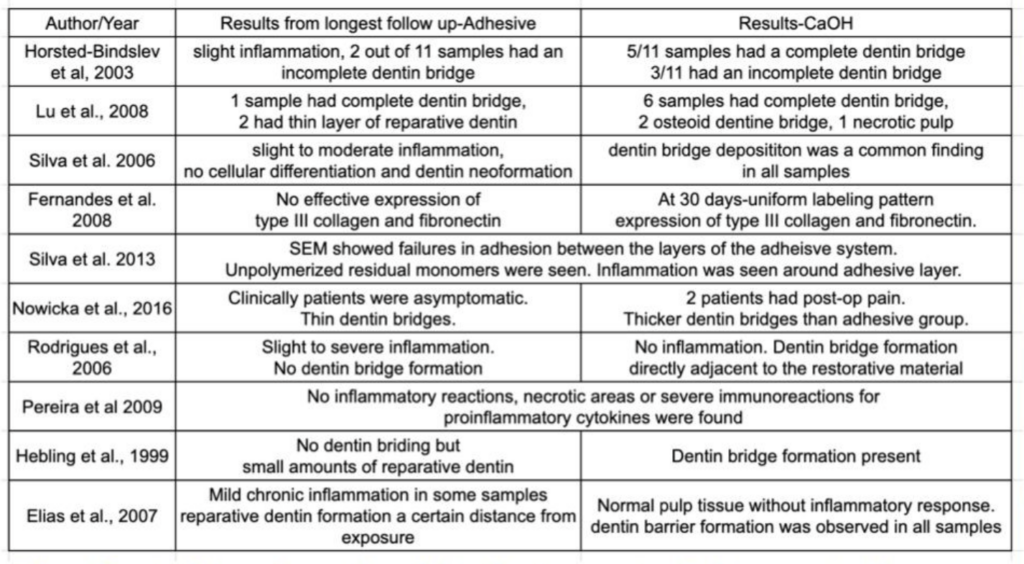
This example can be seen in a specific study1 that looked at SEMs of the exposure sites after restoration, and they saw a gradual decrease in hybridization towards the exposure site. This study did two coats of adhesive, and the SEM saw failures even between the two layers of adhesive. While the patients in this study stayed asymptomatic, the authors still did not recommend using an adhesive as a pulp capping material as “subclinical adhesive failures invariably occur at its interface with the pulp tissue.”
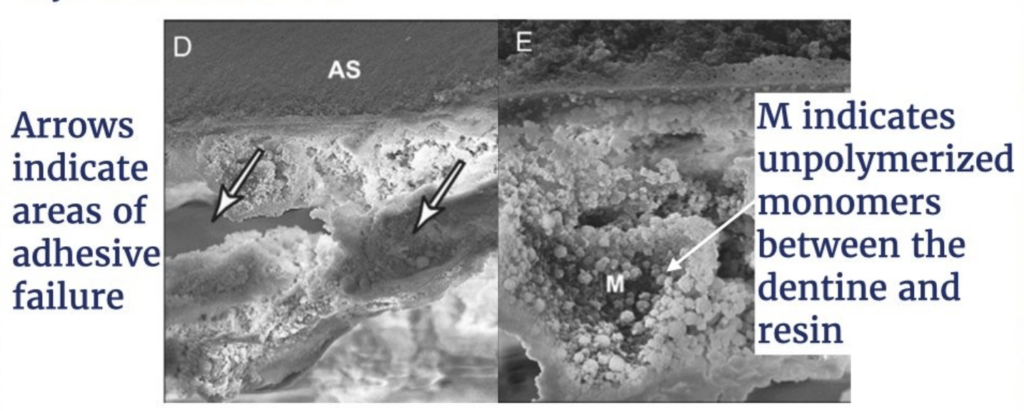
Biomimetic dentistry teaches that the pulp will heal if a strong hybrid layer properly seals the dentin against irritants. Maximizing the surface area of the hybrid layer is why using the adhesive as the direct pulp cap material is recommended. While this paper concluded we should not be using an adhesive, I wondered if the results would be different if the authors used a multi-bottle system. Luckily, another study included in the review used Clearfil SE Bond compared to CaOH.

In this paper by Elias et al.2, the authors used CaOH or Clearfil SE Bond to restore pulp exposures. Then they conducted a histological analysis on days 30 and 90 after completing the restoration.
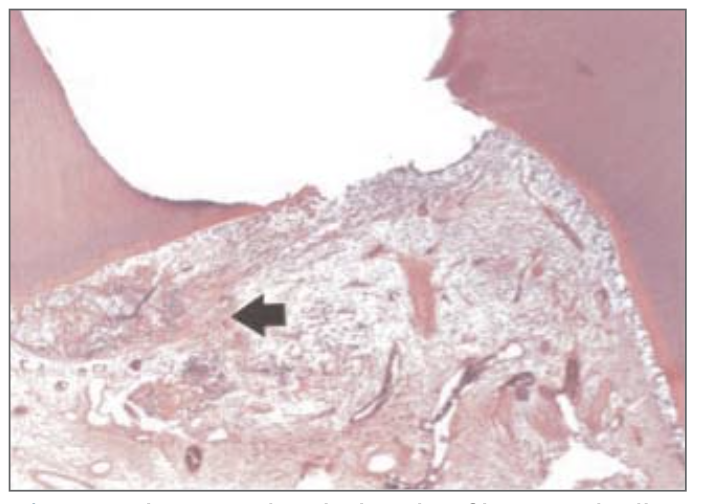
At the 30-day evaluation, the CaOH samples did not show any inflammation in the pulp, and dentin bridge barriers started forming. In the adhesive-only group, there was mild inflammation around the exposure site, but the remaining pulp was normal. While there wasn’t a dentin bridge, cells showed the start of dentin formation in two samples.

At the 90 days evaluation, the CaOH samples saw no inflammation, and all had dentin barrier formation. The adhesive group showed mild inflammation, and reparative dentin was starting to form away from the exposure site.

The authors of this study still recommended calcium hydroxide as the better pulp capping material because it produced a better dentin bridge. My takeaway from this paper was that CaOH accelerates dentin bridge formation, but the pulp can still heal without it. It just takes a longer time.
So what should we do? We will continue these thoughts in the next post.
- Silva GAB, Gava E, Lanza LD, Estrela C, Alves JB. Subclinical failures of direct pulp capping of human teeth by using a dentin bonding system. J Endod 2013;39(2):182-9.
- Elias RV, Demarco FF, Tarquinio SBC, Piva E. Pulp responses to the application of a self-etching adhesive in human pulps after controlling bleeding with sodium hypochlorite. Quintessence Int 2007;38(2):e67-77.